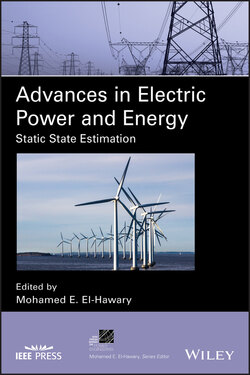Читать книгу Advances in Electric Power and Energy - Группа авторов - Страница 26
1.4.6 SE Maintenance/Troubleshooting and Support Practices
ОглавлениеMany users have state estimator support personnel available continuously. Most users monitor state estimator status on a continuous basis (24 × 7 × 365) and maintain their state estimators with in‐house staff, and some use vendor staff in addition to in‐house staff for support.
Most users notify operators and control room staff of a state estimator failure. State estimator status is presented primarily via alarm tools and physical displays. Some users page and send email notifying of a state estimator failure.
Operators attempt to resolve state estimator problems prior to notifying support personnel.
Many users have a process to investigate and debug unsolved/non‐converged and bad/inaccurate state estimator solutions.
The operator receives an alarm notification of state estimator problems and then calls for support personnel as needed to solve the problem. Alternatively support personnel are on call and connect remotely after business hours to fix reported problems. Support personnel may be paged automatically by the application(s) to troubleshoot the problem.
For example, the Electric Reliability Council of Texas (ERCOT) requires the following state estimator performance measures [24]:
1 State Estimator to converge 97% of runs during a one‐month period.
2 On transmission elements identified as causing 80% of congestion cost in the latest year for which data is available, the residual difference between State Estimator results and Power Flow results for critically monitored transmission element MW flows are required to be less than 3% of the associated element emergency rating on at least 95% of samples measured in a one‐month period.
3 On transmission elements identified as causing 80% of congestion cost in the latest year for which data is available, the difference between the MW telemetry value and the MW State Estimator value shall be less than 3% of the associated element emergency rating on at least 95% of samples measured in a one‐month period.
4 On 20 most important station voltages designated by ERCOT and approved by ROS; the telemetered voltage minus State Estimator voltage shall be within 2% of the telemetered voltage measurement involved for at least 95% of samples measured during a one‐month period.
5 On all transmission elements greater than 100kV; the difference between State Estimator MW solution and the SCADA measurement will be less than 10 MW or 10% of the associated emergency rating (whichever is greater) on 99.5% of all samples during a one‐month period. All equipment failing this test will be reported to the associated TSP for repair within 10 days of detection.
